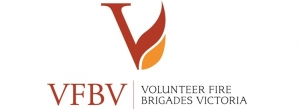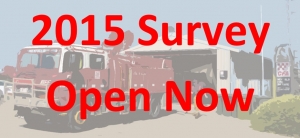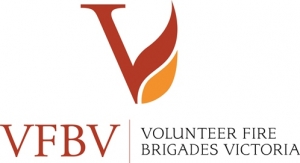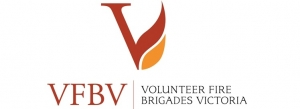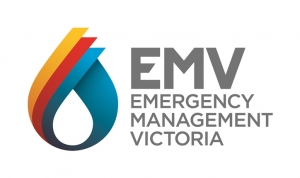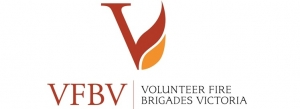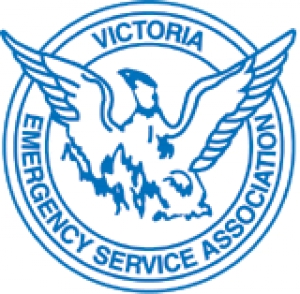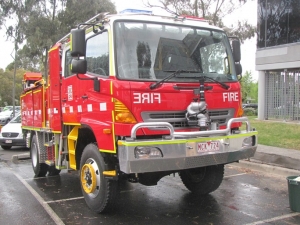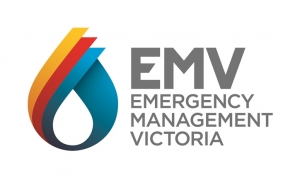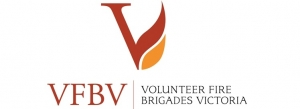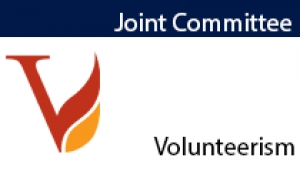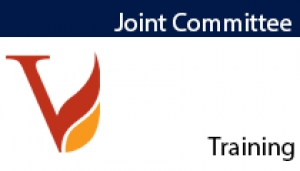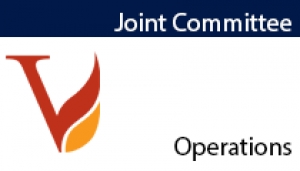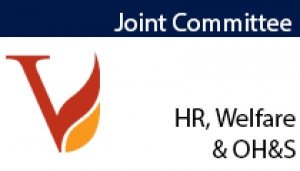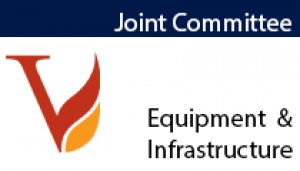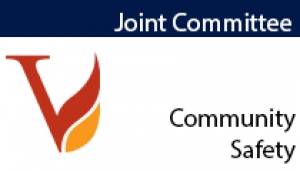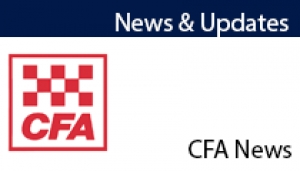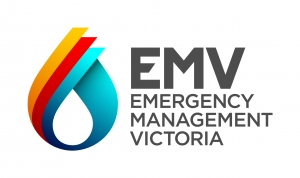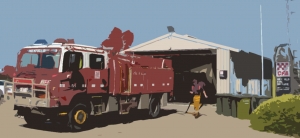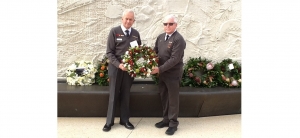Updated July 2015 Calendar available for download below
The Statewide 2015 IMT course application form is now available at Brigades Online - members from emergency service agencies, including CFA, DELWP, MFB, SES and EMV, can access a variety of courses.
The courses are designed to provide technical skills necessary to undertake a number of IMT roles. Following training, there are agency specific requirements that must be met in order to become fully accredited in a particular role.
To nominate for one of the courses in the calendar, you need to complete the course nomination form before the course closing date. Both training and role pre-requisites are outlined. You must have all pre-requisites before nominating for a course.
If you have been identified by your District for a course, you need to complete the IMT training nomination form authorised by your District Operational Manager. If you are a staff member, you will have to speak to your functional manager for approval.
Click here for the course nomination form at Brigades Online
See below to download an updated (July 2015) copy of the course calendar.
Online for the past four weeks, the CFA-run survey provides volunteers and staff from all districts an opportunity to share their feedback on the strategy.
The survey closes at midnight on Friday 31 July 2015.
CFA Executive Manager Training Development James Stitz says “Completing the survey only takes five minutes, but plays a major role in helping us monitor performance and improve what we do.”
"So far we have had over 550 responses. Thank you to everyone who’s taken the time to complete it. If you haven’t had a chance yet, there is still time to have your say.”
Members are asked to do the survey online. If you would prefer a paper-based version, it can be downloaded here.
Printed surveys can be submitted to Liza Gelt, OT&V, by post (16 Lakeside Drive, Burwood East VIC 3151) or email (This email address is being protected from spambots. You need JavaScript enabled to view it.).
Please also contact Liza if you have any queries regarding accessing or submitting the survey.
The Australian Emergency Management Volunteer Forum (AEMVF) is offering a new online resource, the AEMVF Introduction to Leadership Training.
It is free and available to all emergency management volunteers.
This training is 45-60 minutes and can be done at your own pace. It is full of useful learnings and tools to help you discover and grow your leadership capabilities.
This workshop covers basic leadership principles and approaches and provides take away tools to help put your skills into practice.
Follow this link for the course and the accompanying workbook and video.
CFA will participate in the 2015 Australian National Fire Cadet Championships, to be held in New South Wales during the September school holidays.
They are seeking applications from registered junior members aged 14 and 15 years, as well as endorsed junior leaders, to represent CFA at the championships.
Applicants do not require previous championships/competition experience, as the NSW events are not based on CFA running events.
This opportunity will involve members travelling to Sydney to engage in a series of team building and group development activities, as well as participating in the ANFC Championships.
Please see the attached flyer for information on the Championships and application process.
Further information and application forms can be found at http://www.cfa.vic.gov.au/volunteer-careers/junior-volunteers/ or by emailing This email address is being protected from spambots. You need JavaScript enabled to view it.
Applications close, Friday 7 August 2015.
At the June 2015 CFA Honours & Awards Committee meeting, it was determined that the ribbon and ribbon bar for the Brigade Life Membership (Life Member Jewel) must be the colour red (Pantone Code PMS 186).
The Committee determined that a standardised ribbon colour is required for all future Brigade Life Member Medals.
To see the full story or post a comment on the CFA News & Media site, click here.
With presumptive legislation at the committee stage in the Queensland Parliament, Queensland’s Labor Government is now trying to introduce a discriminatory extra eligibility requirement for volunteers.
With a private member’s Bill already proposing presumptive legislation that treats career and volunteer firefighters alike, the Queensland Government has introduced a Bill of its own that would introduce a discriminatory clause that only applies to volunteers and would require volunteers with cancer to have a minimum of 150 “exposure incidents” before they can qualify for presumptive compensation.
South Australian volunteers have already fought and won the battle against legislation requiring volunteers to have arbitrary numbers of turnouts, and the Queensland volunteers are gearing up to do the same, making sure Queensland Government MPs know exactly how they feel.
See the Queensland volunteers’ latest bulletin with their call to action.
The VFBV Auxiliary & Support Group Conference, originally scheduled for 8 August, has now been cancelled.
If you have any enquiries, call VFBV on (03) 9886 1141.
Click here to take The 2015 VFBV Volunteer Welfare & Efficiency Survey
Click here to learn more about the annual survey
Talk to other volunteers in your Brigade about taking part - More participants means greater influence for the survey results when we take them to CFA, the Emergency Management Commissioner and the State Government.
The survey is open until 31 August 2015.
You can see the 2014 results by clicking here
This year, VICSES volunteers have their own survey, hosted by VFBV on behalf of VESA – VICSES volunteers can click here to take part or find out more here.
FROM THE CFA CHIEF OFFICER
- Please contact CFA if you have any queries
Recent safety advice has prompted DELWP and CFA to immediately recall DY-MARK Mine Marking aerosol paint used to mark hazardous trees on the fireground and during planned burning operations.
This recall is being undertaken as a safety precaution following a risk assessment on the contents of this aerosol paint.
It has been determined DY-MARK Mine Marking Aerosol contains methylene chloride which has been listed in Safe Work Australia’s Hazardous Substance Information System as having ‘carcinogenic potential’. DY-Mark aerosols are included in Hazardous Tree Marking Kits which are standard in most firefighting appliances, particularly those in regional areas.
To ensure we maintain the health and safety of our members, the use of this product must cease immediately and all cans recalled. It is to be removed from all CFA vehicles and stored away from any access areas.
Each brigade should return these cans of paint to their district headquarters where they will be transferred to be destroyed in a safe and environmentally responsible manner.
In general, the use of the paint would be very uncommon within CFA. It is used to mark hazardous trees in open, ventilated areas and CFA members would also be wearing PPC and therefore be protected from exposure to the spray. A safe alternative is being investigated as a replacement.
While this product is commercially available and widely used across various industries, as a further precaution medical advice was obtained which has indicated:
- that there is minimal risk from the correct use of this product
- agencies use this product to mark a tree in the open air where maximum ventilation is present allowing dispersal of any fumes or vapours
- its use involves very short spray bursts to mark the tree.
Further, we will keep brigades informed of this safety recall and share any additional information as it comes to hand.
After a successful response in 2014, CFA is once again asking members to provide their feedback and thoughts on the F&EM Training Strategy and its progress in 2015.
James Stitz, Manager of Training & Delivery said: “This survey is an important part of the annual review to measure CFA’s performance against the Training Strategy.”
The strategy was approved by the CFA Board in June 2013 and released to members in July 2013. Since then Operational Training & Volunteerism (OT&V) has been working hard to deliver on a range of strategy actions.
“I’m seeking five minutes input from everyone to enable us to monitor performance and improve what we do,” Mr Stitz said.
Supported by other data analysis, the survey results will be used to assess performance against the baseline results established last year.
The survey is available for members to complete online (https://www.surveymonkey.com/s/TrainingStrategySurvey2015). Alternatively, members may also download and print a paper copy of the survey from Brigades Online (at Training > Strategy > F&EM Training Strategy). The survey is currently open for your input, and will be closed midnight Friday 31 July 2015.
VFBV has been working with CFA’s State PPE&C Management Centre over the past year to develop a suitable additional jacket as an alternative to provide relief from cold and inclement weather.
With the withdrawal of the black woollen jackets from service, volunteer delegates identified that in cold climatic conditions across Victoria, predominantly where members are not issued with Structural PPC, the current Bushfire PPC jacket does not provide sufficient warmth during situations such as road accident rescue, storm events and other non-firefighting applications.
As bushfire PPC is inherently light weight to minimise the risk of metabolic heat build-up in the body, the challenge has been to design a garment to provide relief from cold and inclement weather, whilst providing good levels of day and night visibility, along with limited protection from heat and flame.
This jacket is not intended to replace bushfire PPC, and is not to be used for firefighting purposes, but may be used for other fireground or brigade activity where weather conditions and work load allow.
The prototype jackets are now being field tested, with four jackets provided to every CFA district.
The trial will go for 12 weeks, and District Offices have been asked to make the garments available to interested individuals that are willing to trial the jackets.
Districts have been asked to prioritise members who do not currently have access to structural PPC, are located in Brigades that best meet the intent of the trial (cold climate), are relatively active and willing to provide documented feedback. If you are interested in trialling the jacket, please make contact with your Operations Manager/Operations Officer for further information.
Just released: The Interim Report from the Parliamentary Inquiry into the CFA Training College at Fiskville is available for download below
NOTES FROM THE STATE COUNCIL DISCUSSION BEFORE VFBV’S PRESENTATION TO THE PARLIAMENTARY INQUIRY ON 15 JUNE 2015
The Victorian Parliament’s Inquiry into the CFA Training College at Fiskville has the potential to affect far more than the future of the Fiskville site.
VFBV has provided a written submission and more than an hour of evidence and we have been invited to provide additional information in a second written submission.
The issues to be presented to the Parliamentary Committee were workshopped at the VFBV State Council on 13 June. The State Council determined that the key points to be presented to the Inquiry hearing were;
The safety of our members and support to any members who have been exposed in the past is paramount and should remain the primary concern.
The Committee must ensure the focus remains on safety of our members and support to any members, whether exposed in the past during training or at fire incidents, or members who may be exposed in the future.
Firefighters, paid and volunteer alike, need access to the best possible training and the most real-to-life training. If Fiskville operations are to be closed for rectification works, scaled back or ceased altogether, then the resulting gap in Victoria’s training capacity must be fixed immediately.
If this requires funding for improvements, alternative interim training facilities, or new facilities, then this must not only be a recommendation of the Committee it must also be backed by a firm funding commitment from all sides of politics.
Just as being safe whilst training is paramount, there is a huge risk to firefighters when they are confronted with real life situations if they haven’t had access to appropriate real-to-life training.
The Inquiry process must work to establish a level of confidence amongst firefighters, the community, the Government and the firefighters’ representatives, about the facts. There has been a lot of discussion of what is or isn’t safe, and what can or can’t be fixed. Our members need the Committee to ensure the facts are on the table, that the opinions and assessments of the independent experts are known, and the analysis, decisions and regime going forward are transparent and beyond partiality or self-interest groups.
Having spoken with volunteers across Victoria, we believe it is of utmost importance that the Inquiry must unbundle the issues;
- Past versus present
- Which problems have ceased or been fixed
- Which current problems can be fixed
- Which current problems require further solutions or warrant cessation of use
- If there is a need for cessation of use;
o Is it for all uses
o Is it forever
o Is it until the results of the remaining independent expert examination
Decisions about the future must also represent a sensible use of public money; funds already invested in the site, money that must be spent regardless of whether Fiskville continues to operate or not, and the cost of new facilities or new water treatment regimes. Compromising safety is unacceptable; compromising access to training is unacceptable; and any waste of scarce funding is likely to be met with equally severe criticism.
The importance of the real-to-life training undertaken at Fiskville over the years cannot be overstated; not just hot fire training but the full range of state level and specialised skills in incident management, incident leadership, operational decision making and real-to-life operational exercises.
Much of this requires multi-day and live in courses. The live-in experience and relationship building experiences are fundamental to the preparation required for firefighters to battle major emergencies.
Also of vital importance is access; the availability of training at a time and place, and in a format that suits members. We must fill the gap in local and state level training capacity left by any cessation at Fiskville, including in the interim until permanent solutions can be put in place. And while there is discussion of fixing Fiskville, we must also stress the importance of investment in training not just at Fiskville but at all CFA training facilities, and in the context of growing demand in future.
It is important that the Fiskville Inquiry gives careful consideration to the feasibility and cost effectiveness of all options, with no compromise on safety.
From the beginning, volunteers have asked for expert, independent, transparent and accountable analysis of decisions, and the Parliamentary Committee’s Fiskville Inquiry gives us the opportunity to ensure decisions, messages and treatment are based on facts, established independently by experts, in a properly transparent process.
It is also important that the Parliamentary Committee gives our members clarity, based on expert and independent analysis and facts, about the issues surrounding PFCs, PFOS and what is necessary to ensure safe water quality standards.
It is important to set clear standards and gain the support of Government and sufficient funding to establish this level of treatment and controls to ensure the cost of training, just as it shouldn’t jeopardise the safety of trainees, doesn’t jeopardise the accessibility of state of the art training. This may require a link to the full site audit currently underway before any final decisions – particularly any decisions along the lines of a permanent closure of Fiskville.
Fiskville is, of course, just a part of the big picture on training and maintaining the skills of our volunteer-based CFA and of ensuring the safety and wellbeing of its members, both paid and volunteer, and VFBV is alarmed at the continued delay in the introduction of presumptive cancer compensation legislation for Victoria’s firefighters.
Moving forward, we need;
- Independent assurance of safety, based on facts
- Informed decisions on any options for rehabilitating, fixing and reopening Fiskville
- Protection of firefighters, not just during training
- Empowerment and support to CFA to address training based on need, not capped artificially based on budget
- Removing the rumour, speculation and uncertainty, and making decisions on independent, expert analysis of the facts
Ends….
Emergency Management Victoria (EMV) is the State Convenor for the awards this year, the awards are open to local emergency projects and applications are open now.
The national awards, now in their 16th year, recognise and promote initiatives that help make our communities safer, stronger and better prepared to manage natural disasters.
Victorian winners last year included the Violet Town CFA Red Bucket and Know Your Neighbours program, the St Andrews 2014 Fire Preparedness Calendar, the ‘Are U Ready – surviving small business disaster’ publication, Emergency Support Team – Emerald Pilot Project and the Hume Region Corrections Victoria – Emergency Response initiative.
Applications are judged at the state and territory level and winners become finalists for the national judging. There is also a photography award for photos that communicate work in disaster resilience.
Click here for full details on the Emergency Management Victoria website.
VFBV MEDIA RELEASE - 9 June 2015
CFA Volunteers are watching with considerable interest as the Queensland Parliament begins the process to enact a law which gives all firefighters in Queensland - paid and volunteer - fairer cancer compensation rights.
Presumptive legislation now being enacted in most States except Victoria, works by reversing the onus of proof; the firefighter’s cancer would be presumed to be work related provided the firefighter has sufficient years of service. The claim could still be rejected if it could be proven the cancer was not related to firefighting duties.
Volunteer Fire Brigades Victoria CEO Andrew Ford said the legislation is not about a new entitlement, it is about removing an unfair barrier that blocks sick firefighters from receiving the cancer compensation to which they are entitled.
“It’s just a reversal of the onus of proof. Until now, Queensland firefighters have faced the same unfair barrier as Victorian firefighters; the near impossible task of providing sufficient evidence to prove the cause of the cancer arose from particular fires, incidents or other work duties - events that might have happened 10, 15 or more years ago,” Mr Ford said.
“The Queensland presumptive legislation is the fairer and simpler cancer compensation law that Victoria’s CFA volunteers have been promised, and are still waiting to see,” he said.
“Queensland is joining South Australia, the Northern Territory, Western Australia and Tasmania, in moving to take away the unfair barrier that stops firefighters from accessing compensation when they suffer typical firefighter cancers,” he said.
The Bill now before the Queensland Parliament specifically provides that there will be no discrimination between paid and volunteer firefighters, under the new cancer compensation rights. The Queensland Bill lists the same 12 cancers and minimum lengths of service required to qualify as are standard under the laws adopted by the Commonwealth and most Australian States and Territories, but not Victoria as yet.
The Queensland Bill is what the current Victorian Labor Government promised Victorian firefighters in the lead up to the last election – it uses the same list of 12 cancers and the same years of service requirements as the current law in Tasmania, but without any additional eligibility hurdles that discriminate against volunteers.
“Current Tasmanian law includes additional discriminatory requirements that must be met by their volunteer firefighters, but thankfully these were not part of Victorian Labor’s commitment to CFA volunteers,” Mr Ford said.
“South Australia had similar discriminatory requirements in their original legislation but have now deleted them and given volunteers the same eligibility requirements as the paid firefighters who work alongside them,” he said.
“We are hopeful that the Victorian Government will be in a position to announce details to support their promise at last year’s election, in the very near future,” Mr Ford said.
CFA volunteers who have contracted cancer currently face the difficulty that as volunteers they have no firefighter sick leave or superannuation to fall back on. Victorian law leaves all firefighters, career and volunteer alike, battling red tape and sometimes a long legal battle just to get a fair hearing, whilst they are forced to prove which fires or incidents might have caused their cancer.
It is nearly impossible to meet the standard of proof required by current Victorian law, just as it was under the laws that other States have replaced with fairer presumptive legislation for firefighters with cancer.
“After years of procrastination by the previous Victorian Government on presumptive cancer compensation rights for Victorian volunteer and career firefighters, Labor promised presumptive legislation just like the law that Queensland is now enacting,” Mr Ford said.
“For our CFA volunteer members suffering from work related cancer, the implementation of this Labor promise can’t come fast enough,” he said.
Ends…
Representatives of all Brigade Auxiliaries and Support Groups to are invited to attend the 9th State Conference at Tabcorp Park, 2 Ferris Road, Melton South on Saturday, 8 August 2015.
The Conference starts at 10 am (Tea and coffee will be available from 9 am).
Whilst the Conference Agenda has not been finalised, the following presentations are proposed:
- Ms Claire Higgins, CFA Chair
- Ms Christine Nixon
- Ms Kate Harrap, Acting Executive Director, Operational Training & Volunteerism
- Ms Toni van Hamond, Assistant Director, National Disability Insurance Scheme
- Open Forum
A flyer and RSVP form have been sent to Auxiliaries and Support Groups – for more information, or to have your Auxiliary or Group added to the mailing list, please contact Jenni Laing at the VFBV office on 03 9886 1141 or email This email address is being protected from spambots. You need JavaScript enabled to view it.
The 2015 Volunteer Welfare & Efficiency Surveyis now open until 31 August - to complete the survey now click here.
The Victorian Emergency Service Association (VESA) invites all VICSES volunteers to take part in a volunteer-run survey that will better equip your association to advise VICSES and Government on what’s most important to volunteers.
The survey as designed and road tested with emergency management volunteers, so it gets straight to the point on issues that matter to the people on the front line. The survey includes 33 questions on those issues, and takes 10 to 15 minutes to complete. Each question asks how important the issue is to you, and how well you feel it is being handled by VICSES.
Why a volunteer survey?
This annual survey began with the CFA volunteers’ association, Volunteer Fire Brigades Victoria (VFBV) three years ago, and VFBV is how hosting the VICSES volunteers’ version on behalf of VESA.
The results will be compared year to year, to show trends in how volunteers feel on each of the issues. It is a co-operative process; VFBV and the CFA Board both study the CFA volunteers’ version to highlight aspects of volunteer support that need attention. VESA will put our survey to the same use, providing reliable facts and figures to support the association’s representation of all VICSES volunteers.
Your individual answers will be confidential, but the overall results will go straight to the decision makers.
The survey is designed to identify the factors that volunteers feel have a key impact on their welfare and efficiency, to establish ways of measuring whether things are getting better or worse, and to develop a process that uses these measures to ensure better support for VICSES volunteers and Units.
Open to all VICSES volunteers
This survey is making our representation more effective and making sure every volunteer’s voice has the chance to be heard, whether you and your Unit are actively involved with VESA or not.
Last year’s survey drew more than 1,600 responses.
The survey will give VESA facts and figures we can use in working for the benefit of volunteers, Units and the communities they protect, so we urge all VICSES volunteers to take part.
To complete the survey now, click here.
If you would prefer a paper survey sent by post, contact This email address is being protected from spambots. You need JavaScript enabled to view it. or email the VESA Secretary at This email address is being protected from spambots. You need JavaScript enabled to view it.. The survey will remain open until 31 August 2015.
VicRoads has tentatively committed to changes to its licensing arrangements that should make it easier to train and assess CFA volunteers.
The decision includes changes to the driver training course to incorporate a section on load securing that would potentially halve the licence test time for volunteers.
Further changes could lead to CFA conducting the licence testing. CFA will investigate these options and determine a phased approach to improving driver training and testing for members.
The VFBV/CFA Joint Training Committee delegates see this as a positive and asked CFA to move forward with improving the process so that more CFA volunteers can access driver training and assessment.
Note from VFBV CEO Andrew Ford:
The Emergency Management Commissioner, with in-principle support from the Minister and Premier, has released a draft Emergency Management Volunteer Statement for consideration and feedback from VFBV and volunteers.
The VFBV Board and CEO were invited to provide comments on an initial draft and are happy to report that essentially all of our early feedback has been incorporated into this current draft.
CFA volunteers already place a high value on the existing CFA Volunteer Charter and legislative backing that supports it. The draft Emergency Management Volunteer Statement wording and the formal commitment from Craig Lapsley as Emergency Management Commissioner, and on behalf of the Government as Chair of the Minister’s Volunteer Consultative Forum, has confirmed that the intent of the Emergency Management Volunteer Statement is to strengthen and complement the existing CFA Volunteer Charter, which will continue as an enduring commitment between Government, CFA and VFBV on behalf of CFA volunteers.
As VFBV Chief Executive Officer, my broad view is that the draft Emergency Management Volunteer Statement is a positive and reinforcing commitment by the Victorian Government and Emergency Management Sector to consult and engage with volunteers in emergency management on matters that affect them.
VFBV has been requested to provide further feedback and ideally endorsement of the Statement before 17 July 2015. I think this Emergency Management Volunteer Statement is a positive initiative and invite your comment and/or suggestions for refinement, prior to VFBV providing final advice to the EM Commissioner on 17 July.
Andrew Ford
Chief Executive Officer
Click here for the draft Emergency Management Volunteer Statement and the online feedback form.
Since the State Government announcement of the extension of Emergency Medical Response (EMR) to all CFA integrated stations, a number of additional volunteer Brigades have expressed interest in providing EMR and wanted to know how they can become involved.
Interest is strongest in country areas where ambulance services are stretched or needing support, and VFBV has advised the State Government that EMR would be very welcome in areas where the primary agency, Ambulance Victoria, identifies the need and local Brigades have the willingness and the capacity to deliver the service.
The introduction of EMR service in volunteer Brigades is extremely cost efficient, with equipment costs of around $15,000 per Brigade.
Volunteers were pioneers of EMR in CFA, with five volunteer Brigades starting an EMR pilot in 2008. Since then, those Brigades at Berwick, Edithvale, Mornington, South Morang and Whittlesea have shown the extra skills are not only lifesaving at EMR jobs but are also useful at road accidents and rescue calls.
Brigades that feel EMR would be beneficial in their area and within their capacity to deliver, should contact VFBV. Several Brigades are already actively in discussion with their community and local MPs.
The VFBV/CFA Joint Communications and Technology Committee is warning members not to rely solely on third party notification providers via their smart phones instead of using their CFA issued pagers.
This follows a report to the Committee that some members are handing in pagers in favour of smart phone apps. The Committee warns that the app providers are not officially supported by the agencies and can remove their service at any time, so they are not a safe way of receiving an alert, even if their coverage or feature set is superior to the current CFA pager.
VFBV has been highly critical of the existing pager that was selected by a multi-agency group several years ago, CFA’s pager contract is due to expire next year and VFBV continues to advocate for the need to urgently address possible designs and feature sets for the next generation pagers, including two way communications ability.
The Committee has called for CFA to include Emergency Management Victoria (EMV) in early discussions, to investigate future pager options and ensure mistakes of the past are not made on the selection of the next generation paging device.
This item is from the VFBV/CFA Joint Communications Committee 2 Minute Briefing - to see more items from the Joint Committees, go to the VFBV website's front page and scroll down to the Joint Committee area.
Issue 12: April 2015
A quick snapshot of the priority issues and actions worked through at the most recent Joint Committee meeting between CFA and VFBV. (Meeting held 22/03/15)
VOLUNTEER STRATEGY
The CFA Volunteer Strategy has now been endorsed by the CFA Board, following the final round of field consultation. All members are encouraged to read and familiarize themselves with this important strategy that lays down the foundations of how everyone within CFA will work towards ensuring the future capability of community based volunteer emergency services remains strong, whilst encouraging, maintaining and strengthening the capacity of volunteers.
Now that the Strategy is completed, VFBV has requested that CFA build an action plan to measure and report on key performance indicators against the strategy. This will ensure that the strategy becomes a living document, and not just collecting dust on someone’s bookshelf. CFA has advised they are now preparing an implementation strategy, and delegates have emphasized the importance of using the Chief Officer’s Chain of Command to both inform and deliver the implementation down to the District level. Implementation plans are due to be signed off by June 30 this year.
UPDATES TO JUNIOR VOLUNTEER DEVELOPMENT PROGRAM
As of 18 February 2015, junior members have been able to apply for personal ID cards. The cards are used to identify junior members when participating in CFA-related activities and feature a similar design to the current member ID card, except it is blue instead of orange. Junior members can apply for their card online via their Brigade, with the Member ID Card system being available on Brigades Online; and cards will be posted to them within 4 weeks of application. The cards expire on the member’s sixteenth birthday, when they will be invited to apply for their senior membership.
A new guidebook has also been released, which contains information on the establishment, management and resourcing of junior brigades and is accompanied by application forms for new brigades, junior leaders and junior members. Personal Protective clothing comprising helmet and gloves is also now available for junior brigades to complement the existing junior uniform. Orders can be placed online and delivered to brigades at no extra cost.
Further information can be requested through your District Office, or contacting the JVDP Team within OT&V at HQ.
VFBV VOLUNTEER WELFARE & EFFICIENCY SURVEY RESULTS
The analysis and final report from last year’s VFBV Volunteer Welfare & Efficiency Survey has now been sent to all participants of the survey. A printed copy of the results will also be going out to all Brigades in our next mail out. An electronic copy of the results is available from the VFBV website.
Now in its third year, the survey is an important indicator as to how volunteers feel across a range of matters. Delegates have requested that CFA work with the committee to identify key result area’s that could be addressed, and a proactive plan put in place to drive improvement and narrow the gaps between those issues identified in the survey as underperforming. To take part in the 2015 survey, click here to register and you will receive the survey when it opens.
JUNIOR MEMBER SERVICE RECOGNITION
The Committee has received a request for it to deliberate on a suggestion that junior member service history (years served) be recorded and included as part of a Senior members service history, when awarding CFA service medals. The committee has requested CFA investigate the legal implications (via the CFA regulations) and also an environmental scan as to what other jurisdictions/States do. The Committee will be engaging in wider consultation as this issue progresses, to identify pros and cons, with a recommendation (either for or against) to go to State Council later this year.
Issue 12: April 2015
A quick snapshot of the priority issues and actions worked through at the most recent Joint Committee meeting between CFA and VFBV. (Meeting held 22/03/15)
DRIVER TRAINING
CFA has advised that an audit of the state requirements for driver training and of the current pool of available driver trainers will be completed by the end of March 2015.
Vic Roads has indicated to CFA that minor changes to the current driver training course to incorporate a section on load securing would potentially halve the licence test time for volunteers and contribute to a cost saving in licence testing fees.
Vic Roads have also indicated that further changes could see CFA conducting the licence testing themselves, therefore only requiring the successful candidate to present CFA authorisation to Vic Roads to receive a licence. CFA will investigate these options and determine a phased approach to improving the driver training and testing process for members.
The delegates see this as a positive and requested CFA to move forward with improving the process so that more CFA volunteers can access driver training and assessment.
STRUCTURAL FIREFIGHTING
The completed ‘Respond to Urban Fire’ training package, now known as the ‘Structural Firefighting’ package will be formally handed over to Structural Instructors by the end of March 2015 and structural instructors will then hand the package over to Districts for delivery planning.
Given the expected demand for this package and potential impact on CFA training budgets, VFBV has requested that CFA monitor demand and provide a regular report back to the Joint Training Committee on course demand and delivery per District, including the use of volunteer trainers and assessors.
VEMTC CRAIGIEBURN
CFA has advised that volunteer access to the training facilities at Craigieburn is challenging in the current environment, with the new joint CFA/MFB recruit courses now running on a ‘4 on – 4 off’ shift rotation using most of the available facility capability and occurring across weekends.
The meeting discussed the many challenges that will need to be addressed. VFBV delegates ask why there are blockages to the use of CFA instructors at Craigieburn and the current cost structure for CFA use of the facility for both recruit courses and volunteer training and exercise opportunities.
In light of the recent closure of Fiskville and the various public announcements that CFA volunteers will be trained at Craigieburn, VFBV will be seeking a regular report from CFA on the type and number of courses, number of brigades and volunteers attending and the total training hours per month made available to CFA volunteers at Craigieburn.
OPERATIONAL TRAINING GUIDE
The CFA Operational Training Guide is completed and will be distributed shortly. The guide is designed to support members involved in the planning, coordinating and conducting of training. The guide also provides references and links to training material available online. VFBV and CFA managed a significant volunteer consultation process that has resulted in an excellent outcome.
VFBV and CFA both wish to thank the volunteers who contributed to this project.
Issue 12: April 2015
A quick snapshot of the priority issues and actions worked through at the most recent Joint Committee meeting between CFA and VFBV.
SERVICE DELIVERY STRATEGY 2015 - 2020
The Committee received an update on the progress of consultation of the CFA Service Delivery Strategy being conducted by CFA’s Fire & Emergency Management directorate.
The Service Delivery Strategy will drive CFA efforts to make changes to support local people to solve local problems, and its intent is to focus on public safety at CFA’s core. The strategy is a clear mandate for every member of CFA to take a role in service delivery, whether through the delivery of services directly to the community, or the provision of support services to frontline members.
The Service Delivery Strategy identifies four strategic objectives. These are explained as comprising the major focus areas to lead the change required to build an agile, service focussed organisation, and are; Empowering & sustaining the frontline | Transforming service delivery to meet local needs | Working with communities | Strengthening relationships through collaboration.
Members are encouraged to engage in the consultation sessions occurring throughout the State, and/or speak with your OO or OM on how you can be involved. A copy of the Draft Strategy is available from the CFA website, Brigades Online.
OBSERVATION SHARING CENTRE
Have you observed any problems, shortfalls or successes that you would like to share? Do you have a lesson to share, so others can learn? Your lesson could be a success, a way of doing things in a more efficient or safer way, a close call... anything others could learn from.
Members are reminded that there is an online sharing tool designed to capture member feedback. It is designed so members do not have to wait for an official or formal debrief process in order to capture or submit observations about things that worked well or didn’t work well at an incident, deployment, or campaign fire.
Members are strongly encouraged to use this tool to raise issues experienced with deployments or strike team duties. You can access it from Brigades Online by searching for “Observation sharing centre”.
VOLUNTEER ACCESS TO IMT TRAINING COURSES
The Committee continues to advocate on the need for CFA to better support and encourage volunteer access to IMT training courses. A report to the Committee indicates that throughout 2014 there were 92 IMT course/activities, of which 32 were formal IMT training courses. Over that same period, the report shows only 81 volunteers completed and graduated from one of the 13 Incident Management Common Training Packages. The Committee has requested the reporting of IMT training to be a standing item, and has requested renewed effort to help identify greater and more reasonable opportunities for volunteers to access this training.
ROLE OF GROUP UPDATE
The Committee was disappointed to learn that CFA was not intending to distribute the printed copies of last year’s Role of Group handbook that was produced and developed from the Role of Group Review. The Committee was advised that whilst the books had been printed and were ready for distribution, that CFA no longer supports aspects of the document. The Role of Group Working Party has requested an urgent meeting with the Chief Officer to understand what has changed, the reasons behind those changes and why it is no longer supported.
Issue 12: April 2015
A quick snapshot of the priority issues and actions worked through at the most recent Joint Committee meeting between CFA and VFBV. (Meeting held 12/04/15)
VFBV VOLUNTEER WELFARE & EFFICIENCY SURVEY REPORT
The results of the 2014 VFBV Welfare and Efficiency Survey have been analysed and the report released. The report contains a great deal of information on issues affecting the Welfare & Efficiency of CFA volunteers across the state. As in previous years the 2014 data has been compared to previous years to determine trends and changes. Some of the areas of particular note from the 2014 survey include: 1/Training – This issue remains the most important one for CFA volunteers and is the issue least meeting volunteer expectations. 2/Variation of volunteer experience between Brigades – CFA Volunteers at Integrated Brigades were more concerned with issues related to people management, cooperation, respect and professionalism, indicating that these issues require further attention in these brigades. 3/ Equity, Diversity & Workplace Behaviour – this area indicated differences in response between Male & Female as to the level of importance of these issues and also how they were handled at Brigade, District & Corporate levels within CFA.
It is pleasing to see that 80% of survey respondents are satisfied with their role as a CFA volunteer and that 87% intend to continue their membership. However only 59% of volunteers are satisfied with the way they are treated by CFA. This comparatively low satisfaction score suggests that the greatest potential impact on future volunteer welfare & efficiency sits with CFA in the success or otherwise of their partnerships with brigades.
The results of this survey are closely examined by Government and CFA (Board, Regional and District level). A detailed hard copy of the report which analyses the survey results is being mailed to each brigade in the quarterly VFBV mail out. Alternatively a copy can be found on the VFBV website: www.vfbv.com.au
The results of the VFBV Welfare & Efficiency survey are used by VFBV to bring the frontline volunteers’ opinions and advice on matters that affect their welfare and efficiency direct to the State’s decision makers. Your opinion matters, so please register to have the 2015 survey sent to you as soon as it is available.
Registrations for the 2015 VFBV Welfare & Efficiency Survey are now open, and you can register for the survey by going to the VFBV website, or emailing your name, district and email address to This email address is being protected from spambots. You need JavaScript enabled to view it. Alternatively, a hard copy can be mailed to volunteers by contacting the VFBV Office Ph 03 9886 1141.
CFA VALUES
The CFA Values Review is a key component of the CFA Broader Culture Program. Its aim is to clearly articulate the “do’s” and “don’ts” within the organisation, and provide a framework for how we treat one another and our community.
Commencing October 2014, CFA embarked on a consultation process across HQ and the Regions to review the organisational values, with the aim being to identify three to five values that could unify us in the way we work and how we serve our communities.
Following feedback, CFA is now considering the following five organisational values; Safety, Together, Adaptive, Integrity and Respect.
The Committee was advised that CFA is now developing a plan to articulate and monitor the multiple efforts to embed these new values. Further information explaining these values and the way in which they will be applied will be communicated by CFA in the coming months. The Committee has requested that more effort be made to communicate directly with members and brigades, as feedback suggests many members are still unaware that this work was going on.
Issue 12: April 2015
A quick snapshot of the priority issues and actions worked through at the most recent Joint Committee meeting between CFA and VFBV. (Meeting held 21/03/15)
MAJOR INCIDENT DAMAGE
The committee was advised by CFA that the DMOs had identified a number of vehicles that were damaged throughout the year but the damage had not been reported. The damage was only picked up when they went in for their annual service. It was later found that this damage occurred at a major incident. Major incidents are declared internally by agreement between CFA and Government, and is used to reimburse CFA of costs incurred during major incidents which is above and beyond normal business. Brigades are reminded of the importance of reporting any damage incurred to a vehicle as soon as it happens. In the case of major incidents – this damage is covered by the major incident insurance, and not CFA – thus if damage is not reported until after the major incident reporting case is closed by Government, it can no longer be claimed back through the major incident, and has to be picked up by CFA which impacts local budgeting.
2015 VESEP Program
The Minister announced the opening of the 2015/16 program on Monday 16 March. Applications are due to your Operations Manager by 27th April.
VFBV developed and posted a VFBV Application Help Pack to every Brigade and Group on the 20th March. This pack has been designed to provide advice and tips to Brigades in completing a successful VESEP application. Brigades who were not ready for this year’s program are encouraged to start preparing for next year’s round now, while it is still fresh and on your mind.
Successful applications are expected to be announced by the Minister late July 2015.
2015 PROTOTYPE HEAVY TANKER
The committee inspected the 2015 Heavy Tanker prototype, which is due to go on its State-wide roadshow tour between March through to May 2015. The new prototype is a 4,000 litre Iveco crew cab, with a 2 stage Isuzu water cooled diesel engine pump rated at 1,200 lpm @ 700kpa.
Based on the successful roadshow tours of the Medium Tanker a couple of years ago, and the Medium Pumper earlier this year, Brigades are encouraged to attend these roadshow visits, to provide feedback and commentary on the prototype. All feedback from the roadshow is documented and reviewed by the Committee in order to inform the final build, so your comments and feedback are extremely valuable and important.
For a list of dates and locations for when it will be in your patch, please contact your Operations Manager or ACO.
FIRE STATION DESIGN
The committee has flagged with CFA its intent to conduct a major review of current Fire Station designs and the process that is followed with Brigades during the design and consultation stages throughout the build. VFBV continues to receive a number of complaints about new builds, and the intent of the review is to examine if these are just isolated problems, or larger more systemic issues that might require more attention. CFA delegates to the committee have expressed their support to be involved in the review and the committee has agreed to proceed jointly, with a workshop with CFA Land and Buildings staff scheduled for the next meeting to kick off the process. Updates will be provided as the review progresses. Any Brigades who have recently been involved in a new Station build, are encouraged to discuss your experience with your local State councillor or Committee delegate, so as to help inform the review.
Issue 12: April 2015
A quick snapshot of the priority issues and actions worked through at the most recent Joint Committee meeting between CFA and VFBV. (Meeting held 11/04/15)
COMMUNITY SAFETY CO-ORDINATOR
Approximately 600 Brigades this year will be electing a Community Safety Co-ordinator to the BMT for the first time. This role is supported by a comprehensive Toolkit that covers everything a new or even an experienced Community Safety Co-ordinator will need. The Toolkit contains a CD and other printed information that talks about what the role entails within your brigade and provides members with templates, which allow you to simply ‘fill in the blank spaces”, a guide to Social Media, explaining everything from Facebook to Twitter in clear, easy to understand language and it also contains resources from Fire Safe Kids to Vegetation Management. You can build this toolkit to include items particular to your brigade and it can become a useful resource for all brigade members. The Toolkit is available from your District Office via your Manager Community Safety.
CFA-SES COMMUNITY ENGAGEMENT AND HAZARD AWARENESS FORUM
This year the annual CFA Community engagement forum is joining up with SES, and will be run jointly and open to both CFA and SES members. This year’s forum is being held at Novotel Forest Resort at Creswick on 1st and 2nd of August, 2015. The forum is open to members who undertake community engagement initiatives within their brigades, like working with and educating their communities and those who want to learn about and share local community engagement initiatives with other CFA and SES members, as well as experts in the field. This is a wonderful opportunity for members to showcase their inventive and innovative ideas to an enthusiastic and appreciative audience.
PLANNED BURNS
CFA provided feedback regarding volunteer participation in recent planned burns at Tynong. The committee was very pleased to hear high praise for our volunteer participants. This was a well-run burn and a great experience for all concerned. The feedback spoke about, not only the high level of experience and expertise our volunteers brought to the operation but the enthusiasm and abundance of information they were able to share with other participants. This congeniality and partnership building left a profound and lasting impression.
Members are encouraged to keep an eye out for future burn camps, and discuss your Brigade’s involvement. They are a great learning opportunity, and provide a great opportunity to study fire behaviour and fuel load interactions.
EVENTS & ACTIVITIES REPORTING TOOL APP
Following feedback from Managers Community Safety that many Brigades are involved in Community Events but they are not always known about, CFA has developed a web portal that makes it easy for Brigades to record and report their community engagement activities via their smartphone or tablets.
The portal is called the “Brigades Events & Activity Reporting Tool” with information on its download and use available on Brigades Online. Search for Brigade Activities.
The instructions run members through a step by step process to access the ‘Brigades Events & Activity Reporting Tool” and create a shortcut on your smartphone. If members find these instructions difficult to follow or would like some assistance, they can speak to their BASO’s or Managers Community Safety, as they will be trained in using the portal. Another easy way for Brigades to report their event is to simply record themselves on a mobile phone at the event explaining what the event is and send the video to your Manager Community Safety, and they will record the event for you.
Issue 12: April 2015
A quick snapshot of the priority issues and actions worked through at the most recent Joint Committee meeting between CFA and VFBV. (Meeting held 11/04/15)
LISTENING SETS
The Committee requested a report on the status of the project to introduce new listening sets. CFA advised that two proposed models are currently being technically assessed by CFA prior to issue to the nominated volunteer delegates for field testing and final evaluation. This project has been delayed several times and the committee expressed its frustrations with the delays and reinforced their desire for new listening sets to be available well in time for the 2015/16 fire season. Concerned by any further delays, delegates recommended to CFA that the two listening sets identified for testing be issued immediately to the volunteer reps for field testing; whilst CFA technical testing continues at the same time. This would speed up the process and ensure that the appropriate listening set is identified and purchasing arrangements put in place by June 2015. The committee will continue to monitor.
REGIONAL RADIO DISPATCH
CFA reported that the Regional Radio Dispatch project is running ahead of schedule, and thanked all CFA volunteers for their excellent support in making brigade radios available for the latest re-flash. The recent opening of District 27 required the creation of talk group 527 and fireground channels for the new District, as part of the Regional Radio Despatch project. This re-flash is adding the software required for future resource tracking and short status messaging functions. CFA advised that the latest re-flash will be finished by September.
OBSERVATION REPORTS
The committee was provided with the first CFA Observation report analysis. This new report will allow the committee to monitor outstanding observation reports, and provide greater accountability to CFA and ESTA in ensuring they are actioned and responded to. This new process, and the information contained in the report also highlighted the importance of Observation Reports as one key way for volunteers to improve the quality of CFA incident records. The committee delegates welcomed the analysis but have requested further details behind some of the reported figures so that causes and solutions may be identified.
Whilst VFBV has had reports from some Brigades that they no longer complete Observation Reports due to the perception that “nothing ever happens with them”, VFBV strongly encourages all brigades to continue to submit Observation Reports, especially now the committee can monitor their progress and resolution. Whilst some brigades may question the value in providing an Observation Report – they provide important and valuable information into CFA that can only improve the service provided by ESTA to brigades. It is hoped the report process now in place through the Joint Committee will ensure that Observation reports are investigated and actioned more swiftly in the future.
PAGERS
The committee discussed the ongoing issue with the current CFA pagers. In some cases – reports have been received of members returning their pagers to District and relying on third party notification providers via smart phones. These providers are not officially supported by the agencies and can remove their service at any time – therefore they are not a safe way of receiving an alert, even if their coverage or feature set is superior to the current CFA pager.
VFBV continues to advocate for the need to urgently address designs and feature sets of the next generation pagers, with the current pager contract due to expire next year. The Committee has suggested that a workshop be held with Emergency Management Victoria to investigate future pager options.
The CFA Volunteer Strategy has now been endorsed by the CFA Board, and the VFBV/CFA Joint Volunteerism Committee encourages you to read it (see below to download a copy).
The Strategy lays foundations for how everyone in CFA will work towards ensuring the future capability of community based volunteer emergency services remains strong, whilst encouraging, maintaining and strengthening the capacity of volunteers to deliver CFA services.
VFBV has renewed its request for CFA to prepare an implementation strategy, and Joint Committee delegates have emphasised the importance of using the Chief Officer’s Chain of Command to inform and deliver the implementation down to the District level. CFA has advised work on implementation plans is progressing, with plans due to be signed off by June 30. The Strategy is available for download below.
Emergency Management Commissioner Craig Lapsley has posted his National Volunteer Week video tribute to emergency volunteers on YouTube – you can see it here.
There are close to 100,000 emergency volunteers in Victoria, including 60,000 CFA volunteers.
Here are some CFA volunteer facts and figures:
- There are nearly 60,000 CFA volunteers in more than 1,200 Brigades statewide
- Emergency volunteering is a professional field, with volunteers trained to nationally recognised standards, and CFA Brigades protecting 60% of suburban Melbourne, regional cities and country Victoria, every day and night of the year
- CFA Brigades deal with all manner of emergencies all year round, including house fires, industrial fires, road accidents, floods, chemical spills and rescues, as well as the bushfires of summer
- There are approximately 10,000 CFA volunteers in the outer suburbs of Melbourne
- The CFA’s volunteer firefighters are emergency services professionals with nationally recognised qualifications, working to the same response standards as paid firefighters
- There are also thousands of non-operational CFA volunteers, performing vital support roles, handling equipment maintenance, fundraising, administration and community education
- CFA volunteers are more than 90% of the state’s fire fighting force and 97% of CFA. The great capacity of the volunteer system allows CFA Brigades to provide thousands of trained, experienced firefighters to combat bushfires and other emergencies such as floods, while still providing round-the-clock protection to their own communities
- CFA Brigades protect 3.3 million Victorians and one million dwellings every day and night of the year.
VFBV MEDIA RELEASE - Friday, 8 May 2015
BUDGET A MIXED BAG BUT TRUCK FUNDING IS NEEDED AND WELCOME – CFA VOLUNTEERS
CFA volunteers say the State Budget’s $33.5 million for new fire trucks is needed and welcome, and the $1 million allocation to continue the program of providing amenities at all rural fire stations will be very welcome at those Brigades that don’t currently have toilets.
Volunteer Fire Brigades Victoria (VFBV) CEO Andrew Ford says the truck funding announcement is an encouraging sign the State Government is hearing the concerns that volunteers have raised over CFA’s ageing fleet of front line fire and rescue vehicles.
“There are hundreds of CFA trucks over the nationally accepted age limit of 20 years that are still in use as first response emergency vehicles, and VFBV’s research shows it will take around $30 million a year to gradually bring the fleet up to accepted standards,” Mr Ford said.
“The State Budget’s allocation of $33.5 million for 70 new fire trucks funded in the 2015/16 year is a good start; now it’s important to work towards an ongoing funding commitment and a rolling five year fleet replacement plan that gradually brings the CFA fleet under the 20 year age limit,” he said.
“While CFA’s older trucks are well maintained, they don’t have the speed, handling, crew safety and bigger firefighting capacity of newer trucks – a younger fleet will benefit volunteers and the communities they protect.”
“This year’s budget funding for trucks is a welcome acknowledgement of the volunteers’ concerns, and VFBV will continue to work with the Government on this important issue,” Mr Ford said.
On other fronts, there is some welcome funding but well short of what is needed, particularly considering the urgent need to replace the large scale training capacity lost with the closure of CFA’s Fiskville Training College. The State Budget has allocated $300,000 for planning of a new local CFA training facility near Ballan.
“It is vital that Fiskville’s training facilities and capacity be replaced as soon as possible, and volunteers are concerned that the State Budget did not include strong measures to achieve that,” Mr Ford said.
“Fiskville has had a critically important role in CFA’s network of facilities, training local Brigades in that part of Victoria and providing live-in training and specialist programs for CFA personnel from all over the state,” he said.
“There must be serious and immediate attention paid to meeting the training needs of CFA’s tens of thousands of firefighters,” Mr Ford said.
VFBV has also welcomed the expansion of the Emergency Medical Response (EMR) program to all integrated, staff/volunteer CFA Brigades, but is concerned the funding in the Budget is not enough.
“The funding allocated is certainly not sufficient to train and equip all of the state’s 33 integrated, staff/volunteer Brigades to deliver EMR,” Mr Ford said.
“And there is still no mention of funding to continue implementing EMR in more volunteer Brigades,” he said.
CFA Brigades, including five all-volunteer Brigades, have been providing EMR since 2008 and have saved a number of heart attack victims by dispatching specially trained crews who provide CPR in the vital first minutes until paramedics arrive.
“VFBV welcomes the expansion of EMR so far, but will continue to work with the Government to encourage funding for its introduction to more volunteer Brigades, particularly in country areas where the ambulance service is stretched or needing support,” Mr Ford said.
Ends…
Background information on EMR:
Emergency Medical Response (EMR) was first introduced in 2008 as a pilot program involving five volunteer Brigades, with five integrated, staff/volunteer Brigades joining the program later.
EMR Brigades are specially trained and equipped to deal with heart attack patients and use their shorter response times to begin CPR in the vital minutes before the ambulance arrives and paramedics take over.
The program has resulted in increased survival rates for heart attack victims in areas where Brigades provide EMR.
The report on the 2014 VFBV Volunteer Welfare and Efficiency Survey is now available - you can read it online here or download it below.
We encourage volunteers to read the report, and to register for the 2015 survey now (see below, the survey starts in July).
This annual survey looks at trends in volunteer opinion, and would not have been possible without the more than 1,600 CFA volunteers who took part in 2014.
The survey began in 2012 and is put to work as a productive tool by both VFBV and CFA. This year’s results once again confirm some strong trends that are clear pointers to paths for improvement by CFA.
VFBV will soon run several Drill Down Workshops with groups of volunteers, looking at the outcomes, the causes and possible courses of action. To add your comments, talk to your District’s VFBV Delegates or call Cliff Overton at the VFBV office on (03) 9886 1141.
Please encourage your Brigade members to sign up for the 2015 survey - send your name, district and email address to This email address is being protected from spambots. You need JavaScript enabled to view it. and you will receive an invitation by email. Call (03) 9886 1141 if you require a printed copy of the survey by regular mail.
You can read the full report on the 2014 survey here or download a PDF copy below.
You can sign up for the 2015 survey here.
 The 2014 VFBV Volunteer Welfare and Efficiency Survey is the third annual survey of Victoria’s CFA volunteers conducted by Volunteer Fire Brigades Victoria.
The 2014 VFBV Volunteer Welfare and Efficiency Survey is the third annual survey of Victoria’s CFA volunteers conducted by Volunteer Fire Brigades Victoria.
Whilst there are areas for improvement, it is pleasing to see a trend of gradual improvement against many of the survey aspects. The survey’s intent and main benefit is in guiding effort and focusing energy on just such improvements.
The survey is a practical starting point for conversation and continuous improvement, and with the cooperation of all involved it continues to fulfil the hopes we had for it when we launched it three years ago.
The survey is run by VFBV, informed by growing numbers of volunteers and being put to work as a productive tool by both VFBV and CFA. This year’s survey results once again confirm some strong trends that are clear pointers to paths for improvement by CFA.
A practical and productive document, this survey would not have been possible without the support of CFA volunteers, and our special thanks go out to the more than 1,600 members who participated in 2014.
To all of the volunteers who read this report, I urge you to take part in the 2015 survey and to encourage other members of your Brigade and Group to do the same. By registering now, you can receive the survey by email or by post when it begins in July, and by doing so, you add your own voice to those of the more than 1,600 CFA volunteers who had their say last year.
Andrew Ford
Chief Executive Officer
Volunteer Fire Brigades Victoria
The VFBV Handy Pocket Book will arrive at Brigades over the next few days with the regular VFBV mailout.
The Pocket Book includes contact details for your District’s VFBV officials, important dates and information on championships, volunteer welfare, the VESEP grants program and issues resolution.
This is a first of its kind for VFBV and your feedback is welcome at This email address is being protected from spambots. You need JavaScript enabled to view it.
The statewide roadshow tour of the 2015 Heavy Tanker prototype is now in its last days. See www.cfa.vic.gov.au or talk to your Ops Manager or ACO for the remaining locations.
The tour is based on the successful roadshow tours of the Medium Tanker and Medium Pumper, and the VFBV/CFA Joint Equipment and Infrastructure Committee encourages Brigades to attend and provide comments.
All feedback will be reviewed by the Committee and will inform the final Heavy Tanker design.
There's more on the prototype Heavy Tanker and the tour, at CFA News & Media
UPDATED 5 May - click here to see the Ballarat Courier's coverage of the CFA Memorial Service on Sunday
Council of Australian Volunteer Fire Associations
MEDIA STATEMENT
1 May, 2015
VOLUNTEERS REMEMBER EMERGENCY SERVICES PERSONNEL WHO HAVE LOST THEIR LIVES
Representatives of Australia’s 250,000 volunteer fire-fighters have taken part in the inaugural National Memorial Service for Fire and Emergency Services Personnel in Canberra.
Council of Australian Volunteer Fire Associations (CAVFA) Director Hans van Hamond AFSM and CAVFA Secretary, Bruce Corbett laid a wreath on behalf of their 11 volunteer associations.
“This an important opportunity to remember and show respect to all emergency workers who have lost their lives while protecting the community,” Mr van Hamond said.
“Recent decades have brought better technology, growing professional skills and a safety culture among volunteer and career fire-fighters everywhere, but they still face significant hazards in protecting the community,” he said.
“The enduring memory of those who have lost their lives protecting others is an important part of our focus on the welfare of all emergency workers, and as volunteers we welcome the opportunity this memorial service presents to remember those who have been lost.”
The inaugural memorial service was run by the Australasian Fire and Emergency Service Authorities Council (AFAC), and attended by Members of Parliament, CAVFA representatives and the Chief Officers and CEOs of fire and emergency services from around Australia.
Additional information:
The Council of Australian Volunteer Fire Associations (CAVFA) is an alliance of 11 volunteer fire brigade associations within Australia. The Council was established to give volunteer fire-fighters a united voice in representations with government and key stakeholders.
The inaugural National Memorial Service for Fire and Emergency Services Personnel took place at the National Emergency Services Memorial, by Lake Burleigh Griffin in Canberra, at 8.45 am on Friday, 1 May 2015.

Survey respondents are asked to rate their satisfaction with their role with CFA, the way they are treated by CFA, their intentions to remain a CFA volunteer and their likelihood to recommend being a CFA volunteer to others.
The 2014 survey results across the four satisfaction questions are highly aligned to the 2013 results. 80% of respondents are satisfied with their role in CFA in 2013 and 2014, whilst there is a 2% shift in 2014 from ‘unsure’ to ‘dissatisfied’.
A 2% shift in 2014 from ‘dissatisfied’ to ‘satisfied’ has increased volunteer satisfaction with the way they are treated by CFA from 57% to 59%.
Satisfaction levels with the way volunteers’ rate their treatment by CFA shows the greatest improvement across all satisfaction measures – with a 5% increase in satisfaction from 2012 to 2014.
The ‘intention to continue my role with CFA’ results are identical for 2013 and 2014.

A 1% change in the 2013 and 2014 results for the satisfaction statement ‘I would recommend being a CFA volunteer to people I know’ sees the yes score increase to 81%.
As stated previously, the comparatively low satisfaction score with the way volunteers feel they are treated by CFA suggests that the greatest potential impact on future volunteer welfare and efficiency sits with CFA in the success or otherwise, of their partnerships with volunteer brigades.
In addition to the broader satisfaction questions, survey results against each statement for the past three years can be compiled to observe trends in active satisfaction and active dissatisfaction.
Survey results suggest that whilst volunteers continue to be most satisfied with the support and encouragement they receive at local brigade level, they remain actively dissatisfied with CFA’s performance in relation to consultation at a District, Regional and Corporate level.
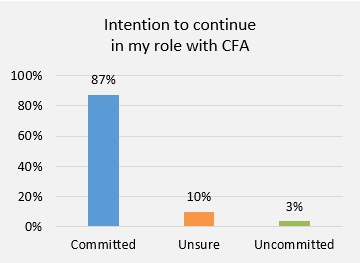
Eleven survey statements scored satisfaction levels markedly higher than the rest of the survey. The same statements have also scored consistently higher for the past three years and in most cases, have shown an improvement in satisfaction levels over that time. These statements relate to the range of factors that contribute to a welcoming and rewarding local brigade environment, that is supportive of volunteers and operating well at a local brigade level.
One statement “volunteers are effectively consulted and involved in decision making at CFA Corporate level” scored dissatisfaction (37%) higher than satisfaction (21%) as well as achieving the lowest satisfaction rating. The same statement scores the second largest gap in survey results and demonstrates an ongoing need for improved consultation between volunteers and Corporate CFA.
Two other statements scored dissatisfaction levels just below satisfaction, consistently over the past three years.
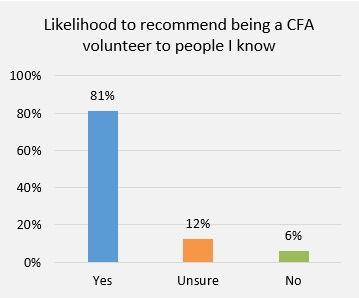
Both statements also relate to CFA policies, practices and workforce arrangements that integrate volunteers and paid staff and the impact these have on volunteer consultation and cooperation.
These results suggest there is an ongoing need for improved effort by CFA to build an effective volunteer-based organisation, in which volunteers are supported by employees in a fully integrated manner.
Given this is a fundamental obligation of CFA as described in the CFA Act, this is an area warranting close attention.

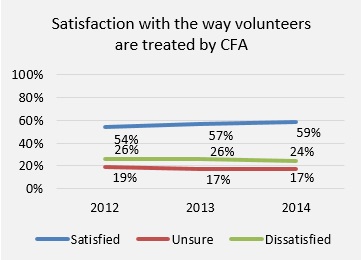


Survey respondents provide information that identifies their age, gender, length of time as a volunteer with CFA and brigade type. This information is collated and used to provide material for further analysis.
Gender
In 2014, 86% of survey respondents were male, and 14% female. This is an under representation of the total CFA female volunteer membership, as CFA data indicates that 20% of CFA volunteers are female. The promotion of future surveys to encourage an increased female representation closer to the total membership percentage would benefit the results.
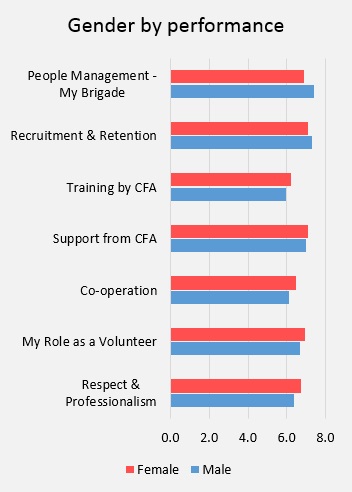
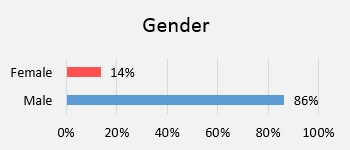
Female survey respondents rated ‘people management – my brigade’ and ‘recruitment and retention’ performance lower than male respondents across the seven themes.
The differences occur when the questions relate to CFA’s performance in conflict resolution, bullying and harassment, in which case, females rate the management of such issues lower than males.
The most telling survey response was in response to the statement “there are no barriers to the roles women can occupy in my brigade”. Females feel that importance and more so performance against this statement are lower than their male counterparts, therefore female respondents see a greater gap.
Nine other survey statements relating to recruitment, retention and brigade behaviour were tested against gender responses; none of the tested statements showed a gender influenced 1.0 gap difference in the above statement. No other statement showed more than 0.5 in gap difference when compared across gender.
More than one third (37%) of survey respondents were in the 40-54 age cohort, which is reflective of the 2010 volunteer participation rate by age as illustrated in the Victorian Auditor General Office 2014 audit Managing Emergency Services Volunteers (p.2).
Survey results broken down by the age range of the volunteer against performance scores show that the overall satisfaction in CFA and brigade is highest in the +65 age group. This may relate to a broader point in life where such views are possibly held on most issues.

The second highest age range to rank CFA highly is the under 25 year old group, this may relate to length of service and a sense of optimism and future reward within CFA.
Age.

More than one third (37%) of survey respondents were in the 40-54 age cohort, which is reflective of the 2010 volunteer participation rate by age as illustrated in the Victorian Auditor General Office 2014 audit Managing Emergency Services Volunteers
Survey results broken down by the age range of the volunteer against performance scores show that the overall satisfaction in CFA and brigade is highest in the +65 age group. This may relate to a broader point in life where such views are possibly held on most issues.
The second highest age range to rank CFA highly is the under 25 year old group, this may relate to length of service and a sense of optimism and future reward within CFA.

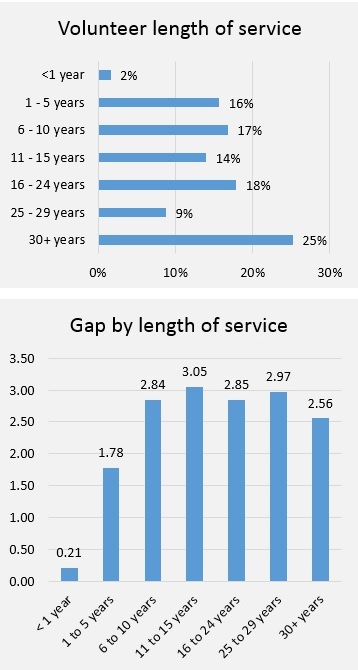
Length of service as a volunteer.
One quarter of survey respondents have spent more than 25 years as a CFA volunteer, the largest length of service group in the survey, whilst 2% had spent less than one year in CFA as a volunteer and 16% less than five years.
Survey results for gap scores were tested against respondents’ age range to see if trends could be identified.
Volunteer length of service created a distinct pattern across the question responses. Volunteers who have served with CFA for less than one year are the most positive about the organisation and their brigade on nearly every question.
Two distinct increases in the gap between importance and performance occur; firstly in respondents with more than one years’ service and then again in volunteers with more than five years’ service. The gap sharply increases after their first year of service, i.e. their level of satisfaction drops sharply after one year and then again after more than five years’ service
Length of service related positivity then begins to reduce the gap back up to the 30+ years’ service mark.
Brigade service/risk environment.
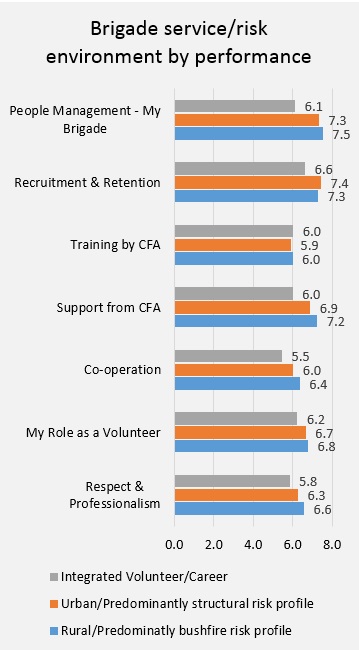
Volunteer membership of four types of brigade service/risk environment could be nominated by the survey respondents, these being;
- Rural/predominantly bushfire risk profile.
- Urban/predominantly structural risk profile.
- Integrated volunteer/career.
- Coast guard brigade.
Only one survey response was received from a coast guard brigade member, therefore this response has little impact on the brigade service environment analysis.
The integrated volunteer/career survey responses consistently scored lower on importance and more so on performance. Integrated brigades scored poorly on performance in relation to workplace bullying, conflict resolution, volunteer consultation, morale and supporting new volunteers. These particular statistical results point to ongoing issues within integrated brigades that require specific attention.
When the nominated brigade service/risk environment responses are tested against performance scores for the survey themes, the results generally show (for five of the seven themes) that brigades with a predominantly rural/bushfire risk rate CFA performance more highly and integrated volunteer/career brigade rate CFA performance the lowest. The only two variations in this trend are where all three brigade service/risk environments rate training performance very closely (6.0, 5.9 and 6.0) and where urban/predominantly structural risk brigades rate recruitment and retention performance higher.
The most marked variation in performance scores between brigade service/risk environments is in the ‘people management – my brigade’ theme where volunteers in integrated volunteer/career brigades rated performance 1.2 below urban/structural risk and 1.4 below rural/bushfire risk types.
The survey performance scores by brigade service/risk environment are reflected in some of the written survey comments, where volunteers feel that the treatment they receive and the relationship they have with career staff are not as good as they should be.
The survey results suggest that further work in understanding the specific issues facing integrated volunteer/career brigades is required in order to improve working relationships between CFA volunteers and CFA career staff.
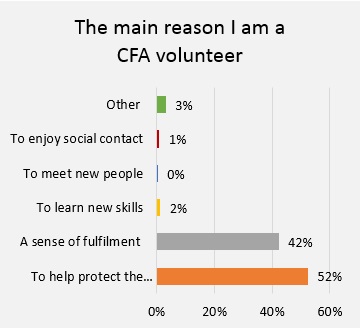
Reason for being a volunteer.
Survey respondents are asked to select their main reason for being a CFA volunteer from six listed options.
Slightly more than half the survey respondents (52%) nominated “to help protect the community I live in” as their main reason, whilst a considerable proportion (42%) nominated “a sense of fulfilment in supporting my community in a meaningful way” as their main reason.
These results are highly aligned to the 2013 survey results, where 50% of respondents nominated “to help protect the community I live in” as their main reason and 44% nominated “a sense of fulfilment in supporting my community in a meaningful way”.
The other four options for both the 2013 and 2014 survey results rated very low by comparison, (4% combined in 2013 and 6% combined in 2014).
When compared to satisfaction levels against the statement “I would recommend being a CFA volunteer to people I know” these results suggest that volunteers play an important part in recruitment, as they are highly motivated by their volunteer experience and keen to see others enjoy the same experience.
Awareness of VFBV.

The number of respondents with reasonably high awareness of VFBV had grown from 71% to 76% compared to last year. There are still many volunteers with either low or only moderate awareness of VFBV, so this is an area for continued attention.
The comments received suggest that many volunteers feel a low awareness of VFBV or being aware of the VFBV overall but not feeling a good enough understanding of what VFBV does. Also, how processes work or how they easily access information on particular issues.
Consistent with previous years there is a diverse spectrum of comments regarding whether VFBV should be more forthright in representing volunteers through to some thinking VFBV is too assertive. Comments describing a tension between pursuing a fair go for volunteers and maintaining harmony, particularly regarding issues where CFA workforce culture, arrangements and industrial agreements impact on areas that also directly affect volunteers.
There are also a mix of comments regarding how VFBV should work as a close partner with CFA and Government versus VFBV needing to be more independent and more publically critical of policy and direction that is not good for volunteers.
Comments reinforce the desire of volunteers to have a grass roots connected, well organised, well-resourced volunteer voice but at the same time a strong concern that the funding of such a voice must not erode VFBV’s independence and objectivity.
There are many comments recognising improvements in VFBV engagement and visibility amongst volunteers and also many comments asking VFBV to communicate achievements more broadly and increase the profile of VFBV at brigade level.
A number of comments express a frustration that VFBV is not vocal enough in the public and media debate complaining of the absence of a strong CFA leadership voice. VFBV needs to do more to educate the community about the importance of CFA volunteers and to defend the reputation of volunteers, when it is put down by interest groups with particular agendas.

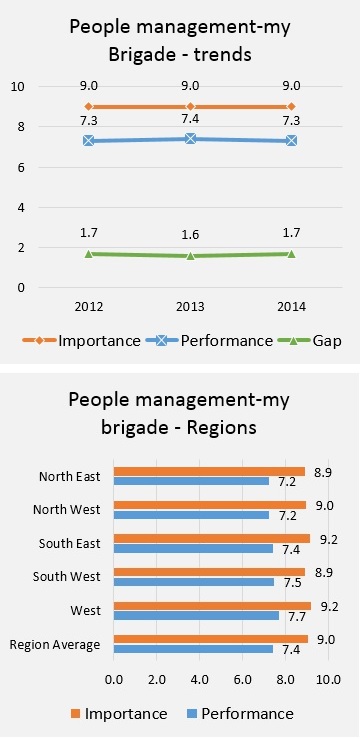
The 2014 survey scores for importance against specific statements in the ‘people management – my brigade’ theme scored equal highest against statement scores across the survey.
The statement “Workplace bullying is not tolerated in the brigades that I have been a member of” scored 9.2 for importance in the 2014 survey, consistent with the score of 9.3 received in 2013. The statement “the environment at my brigade is volunteer friendly, welcoming to new members and creates good morale” scored 9.1 for importance in the 2014 and 2013 surveys.
These scores are supported by written comments received from respondents that relate to their own brigades, with comments relating to a high level of importance amongst volunteers for a safe and welcoming brigade environment, free of bullying or other forms of harassment.
In the written comments, there is a common and substantial concern raised about bullying and harassment, and the poor level of response and support for resolving conflict when it does occur.
One interpretation of the spread and the tone of the commentary could be that when things are going well there is generally a high degree of satisfaction.
However, when there are problems in particular brigades or locations, these have a specific impact on the people involved and are generally not managed as well as they should be.
The comments are consistent with written survey responses to statement fourteen, suggesting that some brigades need more support in this area.
Comments also suggest that there are ‘cliques’, instances of ‘them and us’, ‘clubs’ and other cultural elements that negatively impact on volunteers generally as well as impacting on teamwork and the effective utilisation of many willing volunteers.
There are several comments suggesting conflict situations, problem individuals (both paid and volunteer) and problem cultural elements are not dealt with as quickly as they should be.
There is also a concerning trend suggesting that people are discouraged from speaking out and a repeating concern that officers responsible for dealing with conflict are not objective. A theme recurring through many responses is the need for better leadership development and a more effective process for dealing with conflict resolution that includes a safeguard against subjectivity (described as favouritism by some).
The commentary suggests that when things are working well (which is the predominant assessment across the survey) service as a CFA volunteer is reasonably comfortable, but when conflict escalates, the current approach does not cope as well as volunteers expect it to, leaving issues to escalate and cause long term impacts.
Some of the comments suggest a desire for CFA leadership and support staff to take a more active role when conflict resolution is required. Several comments seek a mechanism whereby VFBV or some other independent organisation can ensure reasonable protocols are in place and that appropriate support is provided to individuals in conflict or bullying situations.
Survey performance scores have dropped slightly from 2013, resulting in a gap score of 1.7. This theme is one of only two to see an increase in gap from 2013 to 2014 (respect and professionalism being the other theme with an increased gap).
West and South West Regions have lower gap scores than other Regions. Further analysis of the factors influencing these results may reveal more valuable information.
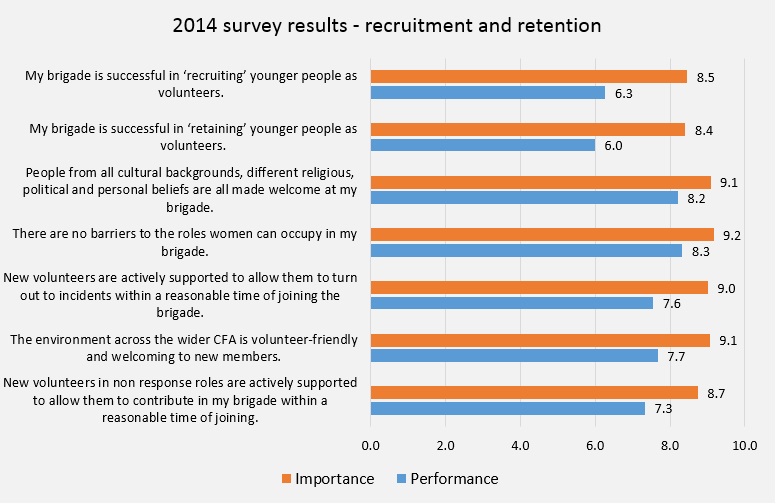
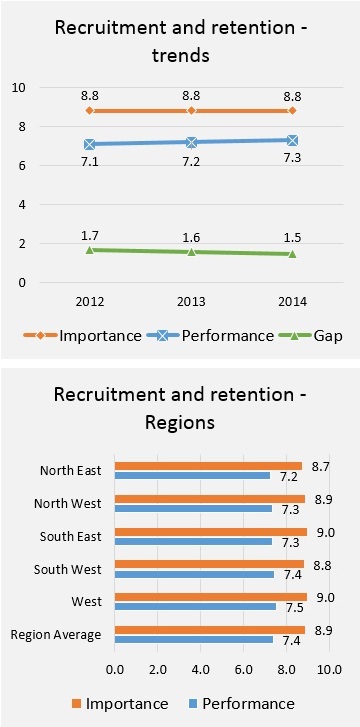
2014 survey result scores for importance in this theme produced the equal highest score for a single statement, that being “there are no barriers to the roles women can occupy in my brigade”, scoring 9.2. This is consistent with the same statement scoring the highest performance score in 2013 (9.3) and demonstrates how highly survey respondents value diversity within their brigades.
Following closely behind this score in the same theme is the statement “people from all cultural backgrounds, different religious, political and personal beliefs are all made welcome at my brigade”, which scored 9.1 on importance and 8.2 on performance.
The recruitment and retention theme received a comparatively small number of written comments as compared to other themes.
Of the negative comments received, there were several around CFA’s need to improve the respect for and treatment of females and that there are still pockets of unacceptable behaviour towards females. These comments support the high importance placed on gender equity in the survey scores.
There were comments acknowledging CFA’s ability to recruit, including younger members and people from more diverse backgrounds and roles however, a frustration exists in that training can be difficult to access or not matched to an individual’s progression in CFA, resulting in keen volunteers not staying or not being utilised.
The most common underlying factor present across most of the negative comments, is a frustration with CFA training, which leads to a negative force jeopardising volunteer retention. Ongoing issues with the difficulties associated with getting onto courses, the flexibility in recognising prior learning beyond the prescriptive CFA training and poor course organisation, were all mentioned.
Some comments expressed an opinion that the culture within CFA paid personnel is not volunteer focussed, and that an ‘us and them’ attitude dominates. One response suggests that CFA needs to incorporate a performance measure relating to volunteer training and retention into CFA staff performance, particularly for staff at integrated brigades.
Other comments suggest that CFA’s senior volunteers should have a stronger focus on mentoring new members. Some comments reflected on the personal experience members had over years of service with CFA and their desire to see future generations benefit from the experience.
2014 survey result scores for importance and performance in the ‘recruitment and retention’ theme produced the smallest gap across all seven survey themes. A gradual increase in performance against a consistent importance score over the past three years has continued to decrease the gap. The gap between importance and performance scores across all five Regions varies only slightly (0.3), and are the closest gap scores Region by Region for the seven survey themes.


Within this theme, survey responses for the statement “CFA provides enough training opportunities in formats, at times and at locations that make it easy for me to participate” have generated the largest gap for the 2014 survey, consistent with having the second largest gap in 2013.
This same statement also received the lowest performance score for any survey statement in 2014 and second lowest score in 2013. The respondents scoring against this statement clearly indicates an ongoing dissatisfaction with the current level of service received from CFA in respect to training.
While written comments for other themes in the survey are brief and sometimes quite individual, the commentary for ‘training by CFA’ is detailed and focussed on common recurring concerns.
These recurring comments refer to a lack of training availability and opportunity, with negative comments on the frequency and timing of courses. Some comments refer to unsuitable training formats and a lack of access to specific training requirements outside of the standard operational training packages, such as leadership training and conflict resolution training.
Written comments also refer to the time taken between attaining qualification and receiving the personal protective equipment required to turn out, once qualified.
Survey responses express this as creating a frustration in volunteers who have made time available to train but are then unable to utilise their training and support their brigade.
These written comments in the training theme are reflective of responses under other themes relating to sense of worth, recognition and treatment of volunteers.
Of the written comments received, few were positive. One of the positive comments reflected an appreciation of the size of the training tasks in CFA and suggested that volunteers and brigades could be more proactive in identifying solutions.
An improvement in performance scores against a stable importance score has seen the gap decrease over the past three years. The biggest influence underpinning this improvement is in the area of leadership training for volunteers, people management and conflict resolution and mentoring.
The difference between gap scores Region by Region for this theme are greater than any other.
South West Region’s positive performance and markedly smaller gap in relation to training may warrant further investigation to determine what is contributing to the success.






